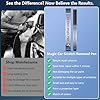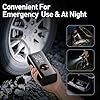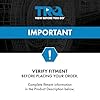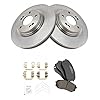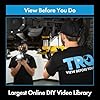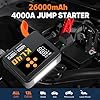Table of Contents
Learning how to use a hand winch effectively is an essential skill for anyone who ventures off-road, works in construction, or handles heavy loads in various settings. Unlike their electric counterparts, hand winches offer complete independence from power sources, giving you recovery capabilities wherever you are, whatever the situation. These versatile mechanical devices allow a single person to move massive weights through clever application of physics and proper technique. However, the tremendous forces involved mean that improper use can lead to catastrophic equipment failure or serious injury. This comprehensive guide will walk you through every aspect of hand winch operation—from understanding the fundamental mechanics and selecting proper anchor points to executing safe recovery techniques and performing essential maintenance. Whether you’re extracting a vehicle from deep mud, positioning heavy equipment, or lifting materials on a job site, mastering these skills will ensure you can tackle challenging tasks with confidence and safety.
Understanding Hand Winches: Types and Mechanics
Before operating any tool, understanding how it works is crucial for safe and effective use. A hand winch is a mechanical device designed to lift or pull heavy loads using manual power, making it indispensable where electricity or hydraulics are unavailable or impractical . The fundamental principle behind all hand winches is the conversion of rotational force into linear pulling power through gear systems that provide significant mechanical advantage.
Key Components of a Hand Winch
Every hand winch consists of several essential components that work together to create pulling force:
- Drum or Spool: The cylindrical component around which the cable, rope, or strap winds. Drum diameter affects pulling efficiency, with larger diameters requiring less force but providing slower line speed .
- Gear Mechanism: The heart of the winch’s mechanical advantage system. Gears translate the force from the handle into increased torque on the drum .
- Crank Handle: The lever arm that the operator turns to generate power. Handle length directly impacts leverage—longer handles provide more mechanical advantage but require more movement .
- Cable/Rope: The lifting/pulling component, typically made of steel cable or synthetic rope. Each material has distinct advantages: steel offers abrasion resistance while synthetics are lighter and safer under failure .
- Brake or Ratchet System: The safety mechanism that prevents the load from unwinding the cable once force is applied. Some winches use automatic load-holding brakes, while others have manual ratchets .
- Housing/Frame: The structural frame that contains all components and provides mounting points .
Gear Ratios and Mechanical Advantage
The true magic of a hand winch lies in its gear system, which multiplies the relatively small force applied to the handle into tremendous pulling power. The gear ratio determines this multiplication factor—for example, a 10:1 ratio means the drum rotates once for every ten handle turns, theoretically allowing 10 kg of handle force to move 100 kg . However, friction and efficiency losses mean actual capacity is somewhat lower.
This mechanical advantage comes with a trade-off: higher gear ratios that provide more pulling power simultaneously reduce line speed. This is why lifting heavier loads with a hand winch takes considerably more time and handle cranks than moving lighter objects .
Table: Hand Winch Types and Their Applications
| Winch Type | Mechanism | Best For | Limitations |
|---|---|---|---|
| Lever Winch (Come-along) | Continuous pull using ratcheting lever | General purpose, short pulls, positioning loads | Limited cable capacity, slower operation |
| Drum Winch | Rotating drum with crank handle | Applications requiring longer cable lengths | Bulkier design, requires more space |
| Worm Gear Winch | Worm drive providing high reduction | Heavy loads where safety is paramount | Lower efficiency, slower operation |
| Ratchet Winch | Pawl and ratchet mechanism | Lower capacity tasks, temporary setups | Less precise control, potential for slippage |
Preparation and Setup: Critical First Steps
Proper preparation is the foundation of safe and successful winching operations. Rushing through setup or taking shortcuts at this stage significantly increases the risk of equipment failure or accidents. A methodical approach to inspection, anchor selection, and rigging ensures that when force is applied, everything functions as intended.
Pre-Operation Inspection
Before every use, conduct a thorough inspection of your winch and accessories:
- Cable/Rope Examination: Check the entire length for fraying, kinks, broken strands (for steel cable), or cuts and abrasions (for synthetic rope) . Any compromised sections dramatically reduce working capacity and necessitate immediate replacement.
- Hook Inspection: Ensure the hook latch opens and closes properly and isn’t bent or distorted. Check that the throat opening hasn’t widened, which indicates overloading .
- Winch Mechanism Check: Operate the clutch (if equipped) to ensure it engages and disengages smoothly. Turn the handle to verify gears operate without binding or unusual noises .
- Hardware Verification: Check that all mounting bolts, shackles, and connectors are present, properly threaded, and secure .
- Control Check: For lever winches, ensure the reversing mechanism functions correctly in both directions before connecting to a load.
Selecting Proper Anchor Points
The anchor point must withstand the forces generated during winching, which can be tremendous. Consider these factors when selecting an anchor:
- Vehicle Recovery: Use dedicated recovery points on the vehicle frame, never tow balls, bumpers, or suspension components . Tow balls are particularly dangerous as they can break under load and become deadly projectiles.
- Natural Anchors: Large trees (use a tree protector strap), well-rooted stumps, or substantial rocks can serve as anchors. For trees, select one with sufficient diameter (typically 12+ inches) and use a purpose-made tree protector to prevent damage .
- Man-Made Anchors: When available, use structural elements like concrete foundations, heavy equipment, or properly installed ground anchors.
- Anchor Strength Test: Apply gradual tension while observing the anchor for movement or deformation. If any shifting occurs, immediately stop and select a more substantial anchor.
Rigging Fundamentals
Proper rigging ensures forces are distributed correctly and efficiently:
- Direct Pull Setup: The simplest configuration with the winch directly between the load and anchor. This provides a 1:1 mechanical advantage with all components experiencing the full load force.
- Double-Line Setup: Using a snatch block (pulley) attached to the anchor point effectively doubles your winch’s capacity and reduces battery strain on electric winches . This configuration halves the line speed but significantly increases power.
- Angle Considerations: Strive for as straight a pull as possible. Side pulls cause cable stacking on one drum end, potentially jamming the winch and damaging the cable .
- Connection Hardware: Use appropriately rated shackles, never makeshift connectors like hooks, bolts, or links. Ensure D-shackle pins are fully threaded and tight .
Step-by-Step Guide: How to Use a Hand Winch
With proper preparation complete, you’re ready to begin the winching operation. Following a systematic approach ensures not only effectiveness but, more importantly, safety throughout the process.
Initial Setup and Connection
- Position the Winch: Mount or position the winch securely, ensuring it’s aligned with the direction of pull. For vehicle-mounted winches, verify all mounting bolts are tight .
- Engage the Clutch: If your winch has a free-spooling clutch, engage it to allow cable payout without turning the gears .
- Extend the Cable: Pull out enough cable to reach your anchor point while maintaining at least five wraps of cable around the drum for steel cable, or eight wraps for synthetic rope . This prevents the cable from detaching from the drum under load.
- Connect to Anchor: Attach the cable end to your anchor point using appropriate rigging. For vehicle recovery, use a tree saver strap around trees and connect with a D-shackle .
- Connect to Load: Secure the winch hook to the load’s designated point. Ensure the hook latch is fully closed and not supporting any part of the load .
The Winching Operation
- Disengage the Clutch: Return the clutch to the powered position if you used free-spooling .
- Take Up Slack: Slowly crank the handle to remove slack from the cable. Ensure the cable spools evenly onto the drum without overlapping or gaps .
- Communication Protocol: Establish clear hand signals if working with a team. Standard signals include:
- Apply Steady Pressure: Use smooth, even strokes on the handle. Avoid jerky movements that create shock loads, which can dramatically increase force on all components .
- Monitor Progress: Frequently check the cable spooling pattern, anchor security, and load movement. Reposition if the cable begins stacking unevenly.
- Use Dampeners: Always place a heavy blanket, specialized winch dampener, or jacket over the cable approximately midway between anchor and load . This reduces whip potential if the cable fails.
Completing the Operation and Shutdown
- Secure the Load: Once the load is positioned, carefully lower it or block it securely before disconnecting the winch. Never rely on the winch brake to hold a load indefinitely .
- Release Tension Safely: If you need to abort the pull, slowly control the release using the winch’s reverse mechanism. Never disengage the clutch under load unless the winch is specifically designed for this .
- Disconnect Hardware: Remove connection points in reverse order—first from the load, then from the anchor.
- Rewind the Cable: Under light tension, rewind the cable evenly onto the drum. This prevents loose winding that can cause binding during future use .
Essential Safety Protocols When Using a Hand Winch
Winching operations involve stored energy that can be extremely dangerous if released unexpectedly. Adherence to safety protocols isn’t optional—it’s essential for preventing property damage, serious injury, or fatalities.
Personal Safety Equipment
- Gloves: Always wear heavy leather gloves when handling wire rope or synthetic line . Steel cables can develop nearly invisible broken strands that act like razor blades, while synthetic ropes can generate enough friction to cause severe rope burns.
- Eye Protection: Safety glasses or goggles protect against flying debris, rust, or broken cable components .
- Sturdy Footwear: Steel-toed boots provide foot protection against heavy equipment and shifting loads.
- Appropriate Clothing: Avoid loose clothing that could become entangled in moving winch components.
The Danger Zone and Safe Positioning
- Establish a Safety Zone: Keep all bystanders at least 1.5 times the cable length away from the winching operation .
- Never Stand Near a Taut Line: The “danger zone” includes areas along the cable path and especially near the midpoint where whipping would occur if the cable failed.
- Angle Yourself Safely: When operating the winch, position yourself so you’re not in direct line with the cable. Stand to the side while maintaining firm control of the handle.
- Never Step Over a Taut Cable: Always walk around, regardless of inconvenience.
Common Winching Hazards and Prevention
- Snatch Blocks: Inspect regularly and ensure they’re properly rated. Pulley failure under load is extremely dangerous.
- Shackles: Always load shackles pin-to-pin, not side-to-side, which dramatically reduces their capacity . Ensure pins are fully threaded and tight.
- Hook Latches: Verify they move freely and completely close. A hook with a damaged or malfunctioning latch should be replaced immediately .
- Abrasion Points: Protect cables running over edges with appropriate sleeves or padding. Monitor these points continuously during operation.
Table: Hand Winch Safety Inspection Checklist
| Component | What to Check | Acceptable Condition |
|---|---|---|
| Wire Rope/Cable | Fraying, kinks, broken strands, corrosion | No visible damage, smooth operation |
| Synthetic Rope | Cuts, abrasions, melted sections, UV damage | Minimal fuzziness, no core exposure |
| Hook | Throat opening, latch operation, straightness | Latch closes fully, no deformation |
| Shackles | Thread engagement, distortion, corrosion | Pin fully threaded, no stretching |
| Winch Mechanism | Gear operation, clutch function, handle security | Smooth operation, positive engagement |
| Control System | Lever operation, remote control wiring (electric) | Responsive controls, no damaged cables |
Maintenance and Care for Long-Term Reliability
Proper maintenance ensures your hand winch remains reliable and safe through years of service. Like all mechanical equipment, neglect leads to premature wear and potential failure when you need it most.
Regular Inspection Routines
- Before Each Use: Perform the pre-operation inspection detailed in the Preparation section .
- Annual Thorough Inspection: Completely disassemble the winch (if within your technical capability) or have it serviced by a professional. Examine gears for wear, check bearings for smooth operation, and verify brake function.
- Documentation: Keep a log of inspections, maintenance, and any issues encountered. This helps identify developing problems before they become critical.
Cleaning and Lubrication
- Exterior Cleaning: After use in muddy or wet conditions, clean the winch with fresh water and a soft brush. Avoid high-pressure spray directly at seals or bearings.
- Gear Lubrication: Follow manufacturer recommendations for lubrication type and intervals. Generally, gear mechanisms require periodic application of appropriate grease to minimize friction and wear .
- Cable Maintenance: Wire ropes benefit from specialized cable lubricants that penetrate between strands. Synthetic ropes typically require only cleaning with mild soap and water.
- Moving Parts: Pivot points, lever joints, and clutch mechanisms may require light oil to maintain smooth operation.
Proper Storage Practices
- Indoor Storage: Store winches in a clean, dry environment to prevent corrosion .
- Cable Protection: Fully rewind the cable under light tension to prevent kinks and tangles. Consider using a protective cover if stored for extended periods.
- Hook Security: Secure the hook to a fixed point on the winch frame to prevent it from swinging during transport.
- Accessory Organization: Keep all accessories—gloves, tree savers, shackles, dampeners—together in a dedicated kit.
Troubleshooting Common Hand Winch Problems
Even with proper maintenance, you may encounter issues during winch operation. Understanding how to identify and address common problems ensures you can respond effectively when challenges arise.
Problem: Cable Not Spooling Evenly
- Causes: Side pull angle, improper initial spooling, kinked cable, or damaged drum flanges.
- Solutions: Reposition winch or anchor for straighter pull, respool cable under tension, inspect and replace damaged cable sections, check drum alignment.
Problem: Excessive Handle Effort Required
- Causes: Insufficient lubrication, damaged gears, binding cable, or overloaded beyond capacity.
- Solutions: Lubricate gear mechanism, inspect for damaged components, ensure cable spools freely, verify load weight doesn’t exceed winch rating.
Problem: Load Slipping or Not Holding
- Causes: Worn brake mechanism, damaged ratchet pawl, or malfunctioning clutch.
- Solutions: Immediately stop operation, inspect brake components for wear or contamination, test ratchet engagement, service or replace worn parts.
Problem: Unusual Noises During Operation
- Causes: Typically indicates insufficient lubrication, gear damage, or bearing failure.
- Solutions: Stop operation immediately to prevent further damage. Disassemble for inspection or consult a professional technician.
Conclusion
Mastering how to use a hand winch safely and effectively opens up a world of possibilities for vehicle recovery, material handling, and countless other heavy pulling applications. The key takeaways are simple but vital: always prioritize safety through proper equipment inspection and personal protective gear; understand the mechanics of your specific winch and its limitations; employ careful setup and rigging techniques; and maintain your equipment diligently. While the physical process of winching requires patience and effort, the satisfaction of successfully recovering a vehicle or moving an otherwise immovable object using only mechanical advantage is tremendously rewarding. With the knowledge contained in this guide, you’re now equipped to approach winching tasks with confidence, knowing you have the understanding to select the right equipment, set it up correctly, operate it safely, and maintain it for years of reliable service. Remember that no recovery or lifting task is so urgent that it justifies compromising safety procedures—when in doubt, slow down, reassess, and prioritize safe practices above all else.
Key Takeaways
- Always conduct thorough equipment inspections before each use and wear appropriate personal protective equipment, especially heavy leather gloves.
- Select anchor points that can withstand the tremendous forces generated during winching—never use questionable attachments like tow balls.
- Maintain a clear safety zone of at least 1.5 times the cable length and use line dampeners to contain energy in case of failure.
- Understand your winch’s mechanical advantages and limitations, including how gear ratios affect pulling power versus line speed.
- Perform regular maintenance including cleaning, lubrication, and proper storage to ensure reliability when needed.
Sources
- GEBUWIN – How does a hand winch work?
- Warn Industries – Basic Guide to Winching Techniques – General Safety
- Lifting365 – Manual Handling Made Safe: Tips for Choosing a Hand Winch
- Unsealed4X4 – How to use a hand winch
- Liftool – How to Use A Hand Winch
- CURT Manufacturing – Winch Wisdom: How to Find the Best Type of Winch for Your Needs
- EMCÉ – Winch safety
- MIT Hoist – How to Properly Install and Use a Hand Winch in Tight Spaces
- MotorTrend – Winching Do’s And Don’ts: Tips And Tricks for Safe 4×4 Recovery
- Arborist Site – Come a long and or Hand Winch









